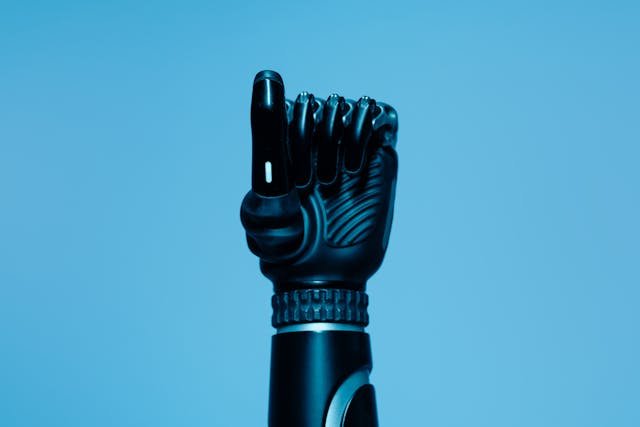In recent years, prosthetic technology for children has undergone remarkable advancements, blending functionality with fun to create devices that are both practical and exciting. In 2024, the focus is on personalized designs, advanced materials, and innovative technologies that not only restore mobility but also empower children to embrace their uniqueness.
Personalized and Themed Prosthetics
Children today have the opportunity to choose prosthetic designs that reflect their personalities and interests. From superhero-inspired arms to limbs adorned with favorite cartoon characters, these personalized prosthetics transform medical devices into extensions of a child’s identity. This customization fosters a sense of ownership and pride, making children more inclined to wear and use their prosthetics confidently.
Embracing Individuality Through Custom Designs
Organizations like Open Bionics have pioneered this approach by offering the Hero Arm, a 3D-printed bionic limb that can be customized with various themed covers. These designs not only enhance aesthetics but also provide functional benefits, such as lightweight construction and ease of use. By involving children in the design process, they become active participants in their rehabilitation journey, leading to improved acceptance and usage of the prosthetic.
Moreover, collaborations with popular franchises have made it possible to create prosthetics that resonate with children’s imaginations. For instance, partnerships with companies like Disney have resulted in prosthetic designs featuring beloved characters, turning the prosthetic experience into an empowering adventure.
Enhancing Confidence and Social Interaction
Wearing a prosthetic that stands out can transform how a child perceives themselves and how they are perceived by others. A prosthetic limb designed with vibrant colors or themed elements can shift the narrative from disability to uniqueness, encouraging positive social interactions. Peers are more likely to show interest and admiration, which can help reduce feelings of isolation and boost the child’s self-esteem.
Parents have reported that their children receive compliments and questions about their prosthetics, providing opportunities for the child to share their story and educate others. This positive attention reinforces the child’s confidence and normalizes the use of prosthetic devices in social settings.
Furthermore, schools and communities are becoming more supportive, often celebrating the individuality expressed through these personalized prosthetics. This acceptance plays a crucial role in the child’s emotional development and integration into various social groups.
Encouraging Active Participation in Design
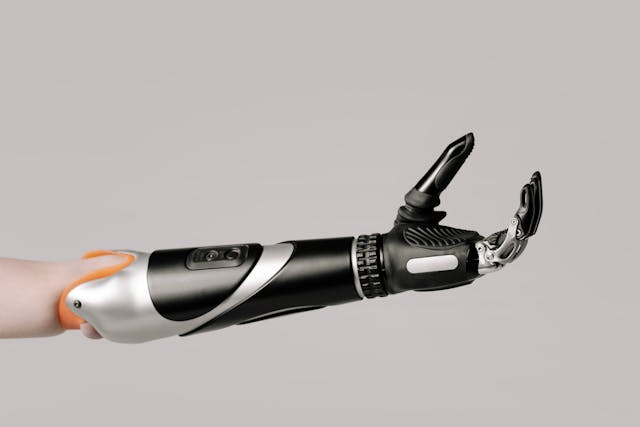
Involving children in the design process of their prosthetic limbs has proven to be a game-changer. By allowing kids to choose colors, themes, and even participate in the creation process, they develop a sense of agency and excitement about their prosthetic. This engagement not only makes the prosthetic more appealing but also helps in the child’s psychological adjustment to using the device.
Technological advancements, such as 3D printing, have made it feasible to produce customized prosthetics efficiently and affordably. Companies can now create bespoke designs that cater to the specific preferences and anatomical needs of each child, ensuring both functionality and personal expression are achieved.
This participatory approach has also led to innovations in prosthetic functionality. Feedback from children regarding their experiences and challenges with their prosthetics informs continuous improvements, resulting in devices that better meet the dynamic needs of young users.
Advanced Materials and Lightweight Designs
The use of advanced materials in prosthetic manufacturing has significantly improved comfort and usability for children. Lightweight yet durable materials, such as carbon fiber and specialized polymers, reduce the physical burden of wearing a prosthetic limb, allowing for more natural movement and prolonged use without discomfort.
Utilizing Cutting-Edge Materials for Comfort
These materials also offer flexibility and strength, essential for withstanding the active lifestyles of children. The result is a prosthetic that not only feels more comfortable but also performs reliably during various activities, from playing sports to everyday tasks.
Additionally, the development of breathable liners and cushioning has addressed issues related to skin irritation and sweating, further enhancing the overall comfort and wearability of prosthetic devices.
Enhancing Mobility with Ergonomic Designs
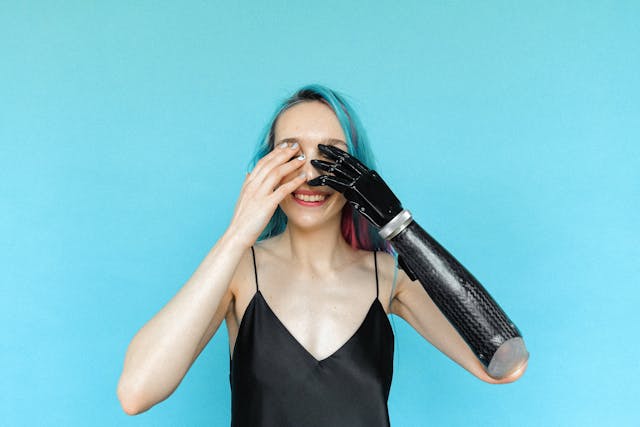
Ergonomic design principles are at the forefront of modern prosthetic development. By focusing on the natural biomechanics of movement, designers create prosthetics that mimic the body’s motions, providing a more intuitive and responsive experience.
For instance, prosthetic limbs now often feature multi-grip functionality, allowing children to perform a range of tasks with greater ease. Adjustable components accommodate growth and changes in activity levels, ensuring the prosthetic remains functional and comfortable over time.
These design enhancements not only improve physical capabilities but also encourage children to engage in a wider array of activities, promoting physical health and social inclusion.
Durability to Match Active Lifestyles
Children are naturally active, and their prosthetics must withstand the rigors of daily play and exploration. The integration of robust materials ensures that prosthetic limbs are resilient against impacts and wear, reducing the need for frequent repairs or replacements.
Innovations such as reinforced joints and shock-absorbing components have been incorporated to handle activities like running, jumping, and climbing. This durability not only provides peace of mind for parents but also empowers children to participate fully in their favorite pastimes without fear of damaging their prosthetic.
Moreover, water-resistant designs have expanded the possibilities, allowing children to engage in activities like swimming and water sports, which were previously challenging with traditional prosthetics.
Integration of Smart Technologies
Myoelectric prosthetics have revolutionized the way children interact with their environment. By detecting electrical signals generated by muscle contractions, these devices allow for intuitive control of the prosthetic limb, enabling precise movements and a more natural experience.
Incorporating Myoelectric Control Systems
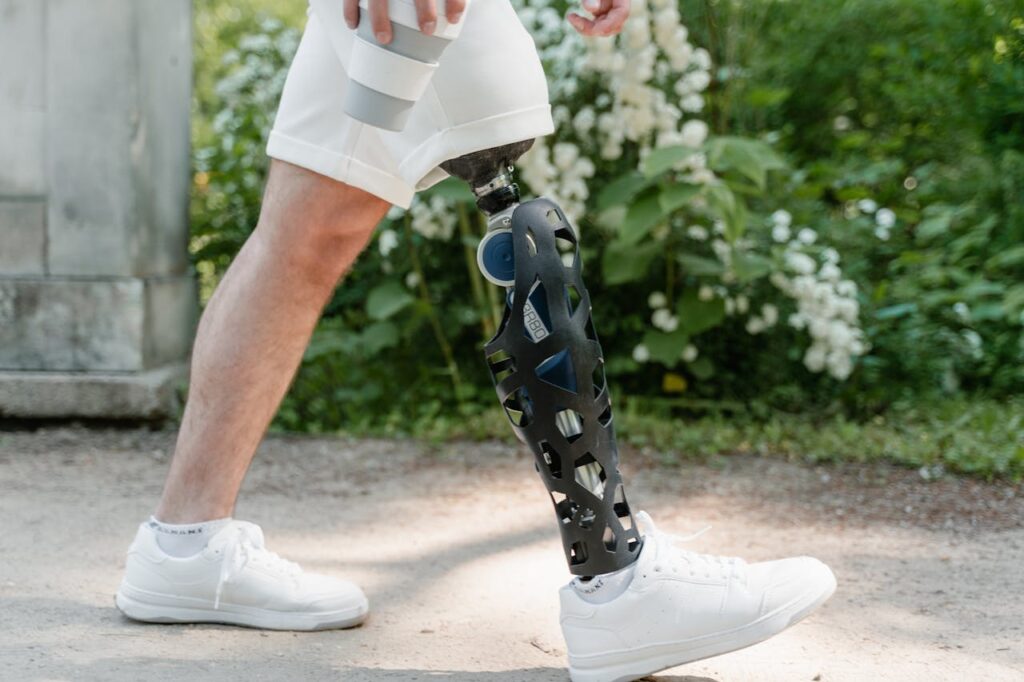
This technology has been particularly beneficial for tasks requiring fine motor skills, such as writing, drawing, or handling small objects. The ability to perform these actions independently enhances a child’s confidence and fosters a greater sense of autonomy.
Advancements in sensor technology have also improved the responsiveness and reliability of myoelectric prosthetics, making them a viable option for a growing number of children. With better sensitivity and faster response times, these prosthetic limbs allow kids to grip, release, and manipulate objects more naturally, making daily activities much easier.
Smart Prosthetics with AI and Machine Learning
Artificial intelligence (AI) is making prosthetic limbs smarter and more adaptive. Some of the latest prosthetic designs in 2024 use machine learning algorithms to understand and predict movement patterns, allowing the prosthetic to respond faster and more accurately to the child’s needs.
For example, AI-powered grip adjustments allow children to hold delicate objects like a pencil or a glass of water without crushing them. The prosthetic learns from repeated movements, making actions smoother and more natural over time.
Additionally, voice-activated controls and smartphone apps now allow kids to customize their prosthetic settings easily. They can adjust grip strength, movement speed, or even switch between different hand positions using a mobile device, making the prosthetic more versatile and user-friendly.
Haptic Feedback for a More Natural Feel
One of the most exciting breakthroughs in prosthetic technology is haptic feedback—a feature that allows users to feel pressure, texture, or grip force through their prosthetic limb.
Haptic sensors send signals to the brain, mimicking the sensation of touch and grip strength. This innovation helps children learn how to apply the right amount of pressure when holding objects, preventing accidental drops or excessive force.
By incorporating haptic feedback into myoelectric prosthetics, kids can develop a stronger connection with their prosthetic limb, making it feel like a true extension of their body.
Adaptive Sports and Activity-Focused Prosthetics
Children love to run, jump, and play sports, and prosthetic technology in 2024 is ensuring that they don’t miss out on these experiences. Adaptive sports prosthetics are designed specifically for high-impact activities, allowing kids to participate in everything from track running to swimming.
Specialized Prosthetics for Sports and Outdoor Activities
Prosthetic legs for running and athletics now feature spring-loaded carbon fiber blades, which provide better energy return and shock absorption. These designs allow children to move faster and more efficiently, reducing fatigue and improving performance.
For kids interested in water sports, waterproof prosthetic limbs are now more widely available. These specialized designs help children swim, surf, and enjoy beach activities without worrying about damage to their prosthetic.
Multi-Grip Prosthetic Hands for Versatile Activities

Children with upper-limb differences now have access to multi-grip prosthetic hands, which allow them to switch between different grip types for various activities.
For example, a child can use:
- A firm grip for lifting objects like books or school bags.
- A pinch grip for writing, drawing, or holding small items.
- A relaxed open grip for playing with toys or shaking hands.
These adaptive features enhance usability, making it easier for children to engage in multiple activities without needing frequent adjustments.
Encouraging Inclusion in Competitive Sports
More organizations and schools are now embracing adaptive sports, creating inclusive environments where children with prosthetics can compete alongside their peers.
Programs like Paralympic training camps for kids and inclusive school sports teams are helping children develop athletic skills, teamwork, and confidence. With the right prosthetic technology, kids are proving that their abilities are limitless.
The Role of 3D Printing in Prosthetic Innovation
One of the most game-changing advancements in prosthetic design is 3D printing, which allows for faster production and greater affordability. In 2024, 3D-printed prosthetics are becoming more widely available, giving children access to customized, lightweight, and cost-effective solutions.
Affordable and Rapidly Customizable Prosthetics
Instead of waiting weeks or months for a traditional prosthetic, children can now receive a fully functional 3D-printed limb in just a few days. This speed is especially helpful for growing children, who may need frequent adjustments or replacements.
Additionally, 3D printing allows for greater customization, meaning kids can choose designs, colors, and features that match their personalities and preferences.
Bio-Printed Prosthetic Skins for Better Comfort
A new trend in 3D-printed prosthetics is bio-printed prosthetic skins, which mimic the feel and flexibility of natural skin. These soft, skin-like coverings provide:
- Better grip for handling objects.
- A more natural look and feel.
- Improved comfort against the residual limb.
This innovation helps children feel more comfortable in their prosthetic limbs, reducing irritation and making long-term wear easier.
Sustainable and Eco-Friendly Prosthetic Materials
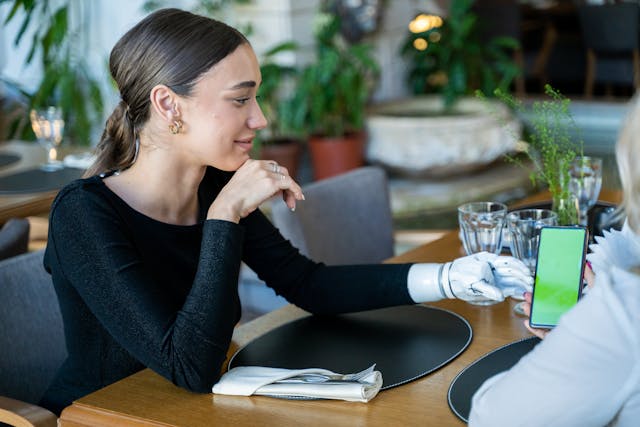
Sustainability is a growing focus in prosthetic development, and biodegradable and eco-friendly prosthetic materials are now being introduced. In 2024, prosthetic manufacturers are exploring plant-based plastics and recycled materials to reduce waste and create environmentally responsible prosthetic solutions.
These sustainable materials provide the same strength and durability as traditional prosthetics, while also being lighter and more cost-effective. This shift towards greener prosthetics ensures that innovation continues in a way that is both accessible and environmentally conscious.
Choosing the Right Prosthetic for Your Child
Every child is unique, and the best prosthetic limb is one that matches their daily activities, personal preferences, and long-term goals. Some children need a prosthetic for basic everyday movements, while others may want one that supports sports, music, or specific hobbies.
Understanding Your Child’s Needs and Lifestyle
Parents should consider factors such as:
- Activity Level – Is the child highly active, or do they require a prosthetic primarily for support and balance?
- Comfort and Fit – A well-fitted prosthetic ensures that the child can wear it all day without discomfort.
- Customization Options – Does the child want a superhero-inspired design, a color pattern, or a sleek modern look?
By involving children in the decision-making process, parents can ensure that the prosthetic feels like an exciting new part of their life, rather than just a medical device.
The Role of a Prosthetist in the Selection Process
A certified prosthetist plays a crucial role in finding the best prosthetic fit for a child’s needs. These specialists analyze limb structure, movement patterns, and skin sensitivity to design a prosthetic that provides optimal function and comfort.
During the selection process, prosthetists:
- Take precise measurements to ensure the best possible fit.
- Help children test different prosthetic models to determine what feels most natural.
- Provide recommendations for future upgrades based on growth and activity level.
Regular check-ups with a prosthetist ensure that the prosthetic remains comfortable and functional as the child grows.
Exploring Funding and Insurance Options
While advanced prosthetic designs have become more affordable in recent years, they still require financial planning. Parents can explore:
- Government aid programs that offer financial assistance for pediatric prosthetics.
- Health insurance policies that cover partial or full prosthetic costs.
- Non-profit organizations and crowdfunding platforms that provide financial support for families in need.
Ensuring access to a high-quality, well-fitted prosthetic limb is a crucial step in helping children lead an active and confident life.
The Importance of Prosthetic Training and Rehabilitation
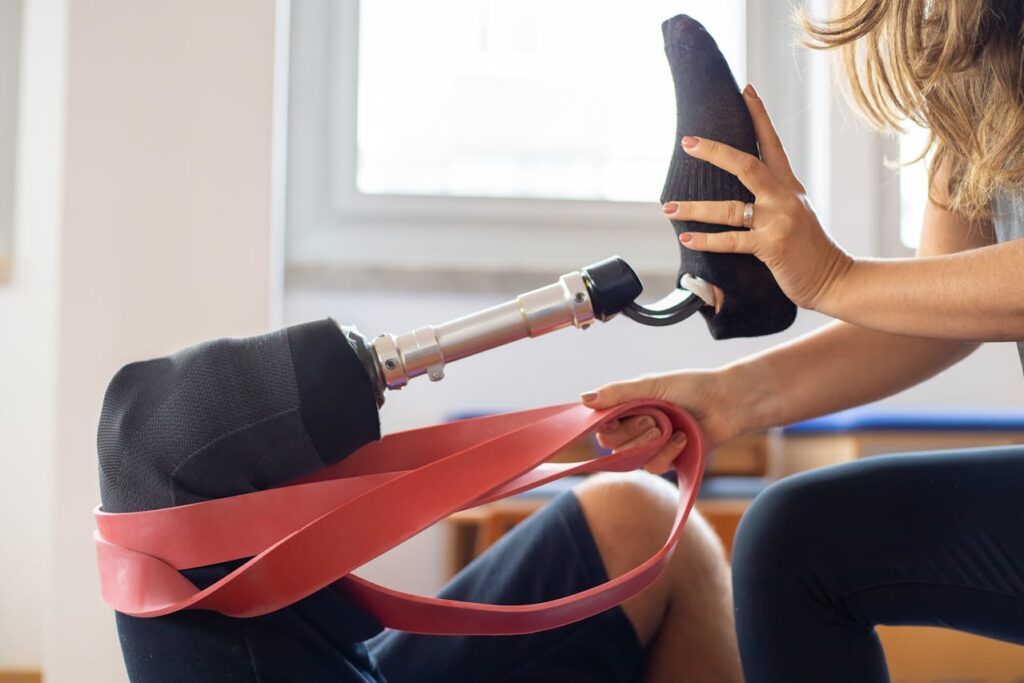
For many children, using a prosthetic limb is a new and unfamiliar experience. Even with an advanced design, it takes time for their muscles, brain, and nerves to fully adjust to the movement and feel of the prosthetic.
Helping Children Adjust to Their Prosthetic Limb
To ensure a smooth transition, children can work with physical and occupational therapists who specialize in prosthetic training. These professionals teach:
- Balance and coordination exercises to help with walking and standing stability.
- Grip strength and fine motor skills training for children using myoelectric arms.
- Daily activity simulations to build confidence in using the prosthetic in school, sports, and play.
Training should be fun, engaging, and focused on gradual improvement, ensuring that children feel excited and motivated to use their prosthetic limb.
Overcoming Initial Challenges
At first, some children may experience discomfort, frustration, or difficulty performing certain movements. The key to success is patience and encouragement.
Parents can help by:
- Setting small, achievable goals for daily prosthetic use.
- Encouraging practice through games and interactive activities.
- Celebrating progress—every new skill is a milestone!
With time and consistent practice, children will learn how to use their prosthetic naturally, making it a seamless part of their daily life.
Incorporating Prosthetic Use into Everyday Activities
The best way for children to become fully comfortable with their prosthetic limb is to use it in real-world situations. Parents can encourage:
- Assisting with household tasks (e.g., holding a spoon, carrying a book).
- Playing with friends (e.g., catching a ball, running, or cycling).
- Engaging in creative activities (e.g., painting, building with LEGO, or playing an instrument).
The more a child uses their prosthetic limb, the stronger their muscle memory becomes, making movements feel natural and effortless.
The Growing Role of Assistive Technology in Prosthetics
As AI-powered prosthetics continue to evolve, new designs now include machine learning technology that allows the prosthetic to “learn” from the user’s movements.
Smart Prosthetics That Learn Over Time
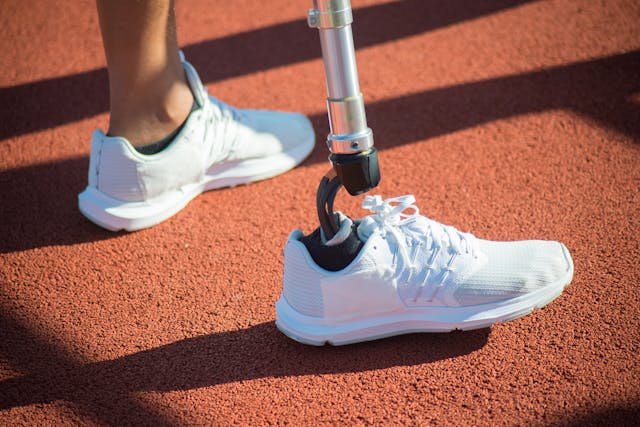
For example:
- A child’s myoelectric arm can automatically adjust grip strength based on the object they are holding.
- A smart prosthetic leg can adapt to different walking speeds, making transitions between walking, jogging, and running smoother.
These advancements ensure that prosthetic limbs become more intuitive, allowing children to perform activities with less effort and more confidence.
Virtual Reality and Gamified Rehabilitation
Prosthetic training is now being enhanced through virtual reality (VR) and gamification, making rehabilitation more engaging for children.
VR-based training allows children to:
- Practice grip strength and movement in a virtual environment.
- Train their muscles through interactive games and challenges.
- Improve reaction speed and coordination while having fun.
By turning training into a playful and interactive experience, children are more likely to stay motivated and engaged in their rehabilitation journey.
The Future of Brain-Controlled Prosthetics
One of the most exciting areas of research is brain-controlled prosthetics, which use neural interfaces to allow direct communication between the brain and the prosthetic limb.
With this technology, children could:
- Move their prosthetic limb just by thinking about it.
- Experience real-time responsiveness, making actions feel even more natural.
- Improve coordination and reflexes, making fine motor tasks easier.
Although brain-controlled prosthetics are still in the early stages of development, they represent the future of prosthetic technology—one where movement feels completely seamless and intuitive.
Final Thoughts: The Future of Fun and Functional Prosthetic Designs
The world of prosthetic technology is evolving rapidly, and in 2024, children with limb differences have more options than ever before. From customized, superhero-themed designs to AI-powered bionic limbs, prosthetic technology is breaking barriers and empowering kids to live without limits.
With advancements in 3D printing, smart technology, and adaptive sports prosthetics, children can now experience greater independence, improved mobility, and enhanced confidence. These innovations are not just about functionality—they are about making prosthetic limbs a source of pride, excitement, and self-expression.
At Robobionics, we are committed to bringing the latest in prosthetic innovation to children in India and beyond. If you’re looking for a fun, functional, and fully customized prosthetic for your child, contact us today to explore the best options available.



